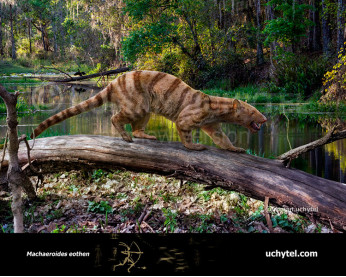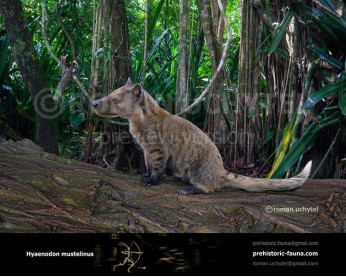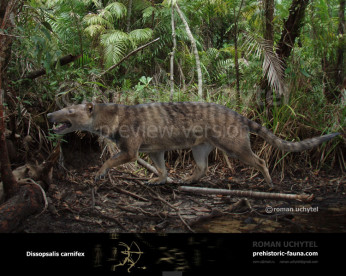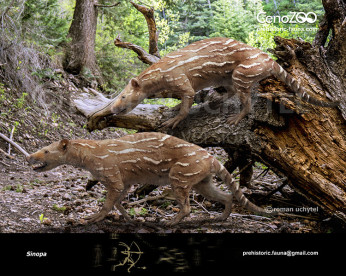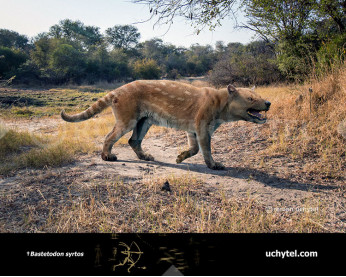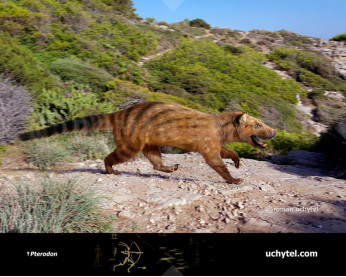Prolimnocyon atavus
239239Prolimnocyon (Prolimnocyon atavus Matthew, 1915)
Order: Creodonta
Family: Hyaenodontidae
Range and period of existence: Late Paleocene - Early Eocene of North America
Dimensions: length - 1,3 m, height - 20 cm, weight - 10 kg.
Hyaenodontidae were the most successful group of creodontas that managed to survive for millions of years. Members of this family ran the gamut of carnivorous mammals, giving rise to a huge variety of shapes and sizes. However, by the Middle Eocene, Hyaenodontidae began to shrink in size and were represented by species no larger than a jackal. Their development was probably hindered by oxyaenids and mesonychids. Only after these groups began to fade did Hyaenodontidae begin to turn into rather large predators. The family Hyaenodontidae brings together five subfamilies: proviverrinae, limnotsioninae, maheroidinae, pterodontinae and gienodontinae. Proviverrinae were the most primitive Hyaenodontidae. These predators moved into North America in the late Paleocene in parallel with oxyaenids, and in the Early Eocene expanded their range to include Europe and Africa. In general, Proviverrinae were no larger than today’s housecats. For the most part, it was a primitive animal, relying on half-plantigrade limbs and outwardly resembling long-muzzled mongoose, vivveras and civets, whose prey were insects and small vertebrates. In the late Eocene the Proviverrinae became extinct. They lived till the end of the Oligocene - early Miocene only in Africa and South India. In the late Paleocene - early Eocene, the subfamily Limnocyoninae developed from Proviverrinae populating North America. These were relatively small animals, the size of a large cat. In lifestyle and appearance they resembled martens or long-muzzled and elongated fossa (Cryptoprocta ferox) with a long tail. Prolimnocyons, representatives of the subfamily Limnocyoninae, were typical examples of predators of that era. Their elongated body and half-plantigrade limbs were ideal for hunting in the woods, both on the ground and in the trees. Their long tail served to balance them, and their squat body allowed them to climb into holes and crevices in search of prey. These animals fed on small animals and insects. In the early Middle Eocene, Limnocyoninae became isolated from Machaeroidinae. There are only two known members of the subfamily - Machaeroides and Apataelurus.
Prolimnocyon (Prolimnocyon atavus Matthew, 1915)
Order: Creodonta
Family: Hyaenodontidae
Range and period of existence: Late Paleocene - Early Eocene of North America
Dimensions: length - 1,3 m, height - 20 cm, weight - 10 kg.
Hyaenodontidae were the most successful group of creodontas that managed to survive for millions of years. Members of this family ran the gamut of carnivorous mammals, giving rise to a huge variety of shapes and sizes. However, by the Middle Eocene, Hyaenodontidae began to shrink in size and were represented by species no larger than a jackal. Their development was probably hindered by oxyaenids and mesonychids. Only after these groups began to fade did Hyaenodontidae begin to turn into rather large predators. The family Hyaenodontidae brings together five subfamilies: proviverrinae, limnotsioninae, maheroidinae, pterodontinae and gienodontinae. Proviverrinae were the most primitive Hyaenodontidae. These predators moved into North America in the late Paleocene in parallel with oxyaenids, and in the Early Eocene expanded their range to include Europe and Africa. In general, Proviverrinae were no larger than today’s housecats. For the most part, it was a primitive animal, relying on half-plantigrade limbs and outwardly resembling long-muzzled mongoose, vivveras and civets, whose prey were insects and small vertebrates. In the late Eocene the Proviverrinae became extinct. They lived till the end of the Oligocene - early Miocene only in Africa and South India. In the late Paleocene - early Eocene, the subfamily Limnocyoninae developed from Proviverrinae populating North America. These were relatively small animals, the size of a large cat. In lifestyle and appearance they resembled martens or long-muzzled and elongated fossa (Cryptoprocta ferox) with a long tail. Prolimnocyons, representatives of the subfamily Limnocyoninae, were typical examples of predators of that era. Their elongated body and half-plantigrade limbs were ideal for hunting in the woods, both on the ground and in the trees. Their long tail served to balance them, and their squat body allowed them to climb into holes and crevices in search of prey. These animals fed on small animals and insects. In the early Middle Eocene, Limnocyoninae became isolated from Machaeroidinae. There are only two known members of the subfamily - Machaeroides and Apataelurus.

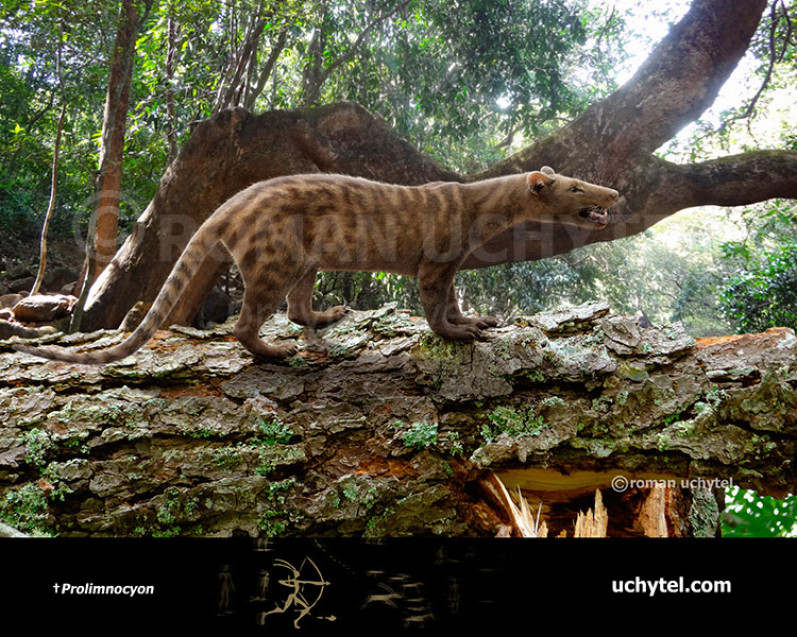
-797x638.jpg)
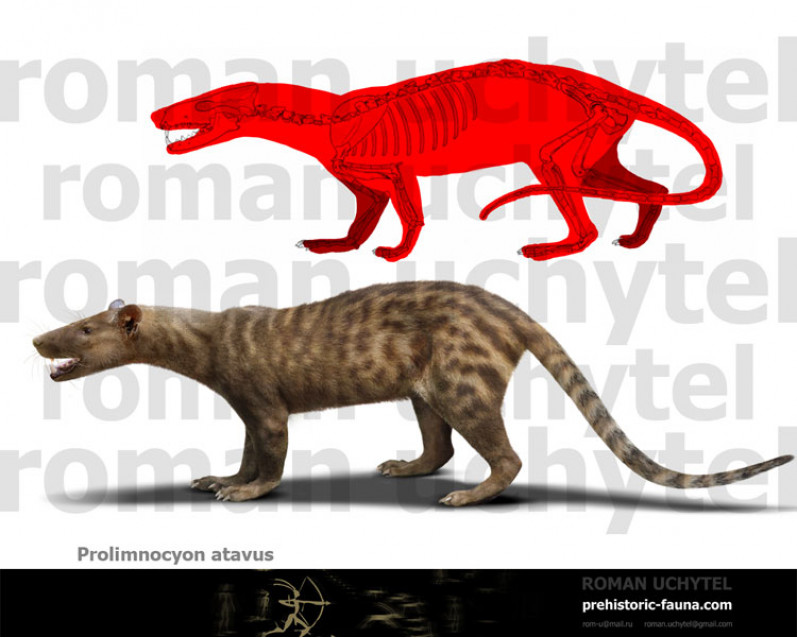

-70x56.jpg)

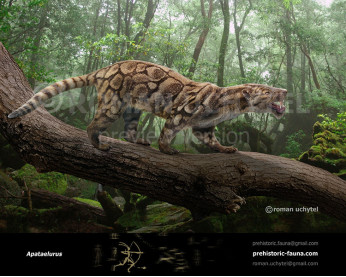
-346x277.jpg)
